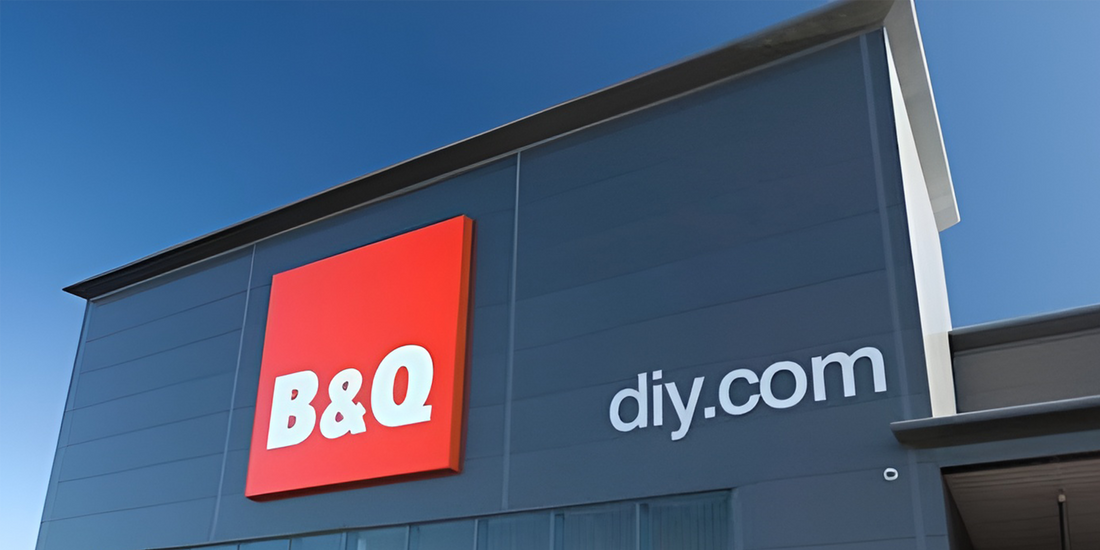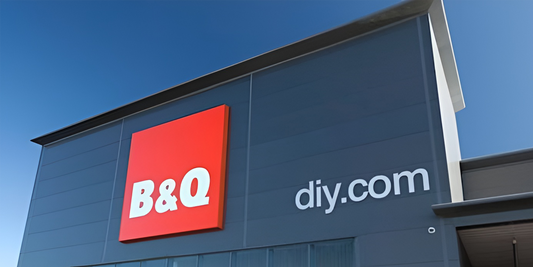
Where The Power of The Big Brand Marketplace meets The Automation of POD Fulfilment
Andy DevineShare

Everyone knows about Amazon and eBay being hugely popular online marketplaces where just about anyone can publish and sell products. The advantage being that you benefit from their brand recognition, customer trust and familiar shopping experience.
But did you know that there are many other major brand retailers who also operate their own online marketplace?
Two fantastic examples of this are B&Q and Tesco here in the UK. And there are more if you take the time to look.
Sellers can apply for a seller account and publish products to their online marketplace; with all the same advantages you get from selling on Amazon and eBay.
And best of all, in almost all cases, their platforms integrate with Shopify. Which brings with it a whole heap of benefits. The primary advantage is that you can use Shopify to integrate with any number of these big brand marketplaces and manage all your products and orders in one place.
And guess what else integrates with Shopify? That's right! Our SuperFast POD app!
So what does this mean?
It means you can fully automate selling on all these platforms. From a customer clicking buy on your product on Tesco, B&Q, Amazon, eBay, to us receiving the order, making it and shipping it out, to your customer receiving their order. 
So how does it work?
1. Shopify is the Hub for all things.
You don't even need to build a public facing website or buy a domain to use Shopify in this scenario. As Shopify will simply be acting as a back-end system to plug together all the various marketplaces to our SuperFast POD app. So, sign up for a Shopify store. In most cases the basic plan with be enough for this.
2. Install our SuperFast POD app into your Shopify store
Install our FREE app and register and you're connected to our fulfilment services.
3. Create your products in Shopify
Two ways to do this.
- Create products directly in Shopify - You will need to liaise with us if you choose to do this so we can help you configure your products to work with our services. This is a good way to publish a lot of products quickly by using a product feed app or Shopify’s brilliant spreadsheet product import feature.
- Create products in the SuperFast POD app - This is a good option if you are just starting up or just want a simpler way to create your products. Our app is designed to make it easy to create products with your designs and publish them to your Shopify store.
4. Get signed up with the Big Brand Marketplace
This is where things can get a little fiddly as you now must apply to become a seller on the big brand retailer’s marketplace. So, we recommend you do your research on each marketplace’s requirements before diving into all of this.
Taking B&Q as an example, they have quite a lengthy onboarding process which involves you providing a lot of information about your business and being vetted by a thorough KYC process. And only after being approved can you integrate their platform with Shopify and publish your products to their store.
But in our experience B&Q have very good documentation and guidance on taking you through all this. And their onboarding and support teams are very responsive.
Conversely, Tesco marketplace has a much simpler onboarding process, but their guidance and support are not quite as helpful.
5. Integrate your Shopify store with the Big Brand Marketplace
All these marketplaces are either built on their own bespoke eCommerce platform like Amazon or eBay or use a 3rd party eCommerce platform. And you will need an app to connect your Shopify store to them.
Sticking with B&Q as an example, they use an eCommerce platform called Mirakl. Which is used by several big brand retailers. Mirakl connects to Shopify using their Mirakl Connect app.
And again, conversely to B&Q, Tesco use a platform called Marketplacer, but they do not have an app to connect your store to their platform. Instead, you must create your own developer app in Shopify to connect to their API. This isn't actually as complicated as it sounds, and they provide good documentation for this.
6. Sync your Shopify products to the Marketplace
Once you've got all the integration set up then it's time to publish all your products to the marketplace. Each marketplace has a different process and set of requirements.
But fundamentally the following requirements are the same for all. Make sure...
- your product data is correct
- you have good SEO friendly product titles
- your product images are good quality
- your product descriptions are comprehensive and well written
- your variant structure is logical
- your stock levels are managed and show a stock value in Shopify (even though your products are POD they will want to see stock numbers)
- your retail pricing is correct
Some Marketplaces will require you to have GTIN barcodes for your products. So, we recommend signing up with GS1 UK and getting some barcodes.
In our experience this is the stage that causes the most headaches and can take the most time to get right. And it's not a part we will be able to help you with. You may find yourself relying heavily on the support team of the marketplace you are trying to publish your products to.

Usually, these marketplaces have an approval process before your products will go live on their platform. But once you’re done with this your products will be live.
7. Start Selling
If you've done everything right up to this point, and your products are live on the marketplace, then it should all just work.
We recommend placing 1-2 test orders, as if you were the customer, to see the whole process happen end to end. Bear in mind there is a lot of systems interacting here so not all steps occur instantaniously. For example, you might see a 10-15 minute delay between you receiving an order on Amazon and that order appearing in your Shopify store.
If everything is working, then the following will happen.
- The customer buys your product on the Marketplace.
- Marketplace sends order details to your Shopify store.
- You Shopify store sends the order to us via the SuperFast POD app.
- We make the order and ship it.
- We send the despatch confirmation and tracking info back to Shopify.
- Shopify forwards this info to the Marketplace.
- Marketplace sends an email to the customer with despatch confirmation and tracking info.
- Customer receives the order after delivery.
And that’s it!
So how much does it cost?
Good question. And you'll need to know all the associated costs to set your retail pricing appropriately. All marketplaces charge seller fees. And those fees can differ dependant on the product category you are selling in.
We can't tell you all the precise fees involved but here's a basic summary of where you will incur expense.
- Shopify - Plan subscription + marketplace app fees.
- Marketplace - Sellers fees (usually a percentage of sale value)
- Marketplace - Ad fees if you are running sponsored ads
- GS1 UK - purchase of barcodes if required
- SuperFast POD - Production + Shipping Cost
This might sound like a lot. But if you present your products well, with good product images and good artwork, with us making sure the product is well made and shipped safely to your customers, then you should be able to sell at a retail price that leaves plenty of room for profit.
Anything else I should be aware of?
Yeah. Few things...
Returns Policies - You will be required to adhere to the marketplace returns policies. So, if they differ from yours you will have to make accommodations. You can also expect a slightly higher return rate than you might be used to, as big brand customers are more inclined to have a buy-to-try mentality.
Probably Best to Avoid Selling Personalised Products - mostly because of the previous point. You can't resell a returned personalised product.
Shipping Costs - some marketplaces may require you to offer FREE shipping by default. Some marketplaces won't demand it, but to be competitive you will need to offer it. So, make sure you factor this into your retail pricing.
Shipping Times - some marketplaces have strict requirements around shipping and delivery times. You should take time to understand what these are, as you will need to configure these in your marketplace account set up to give the customer accurate expectations. Thankfully our production times are highly competitive. With a 1-3 day production lead time we can despatch well within most marketplaces requirements.
Here's some useful links...
Our SuperFast POD app in the shopify app store
Apply to become a B&Q Marketplace seller
Apply to become a Tesco Marketplace Seller
Recommended App for integrating Shopify with Amazon
GS1 UK where you can purchase barcodes


